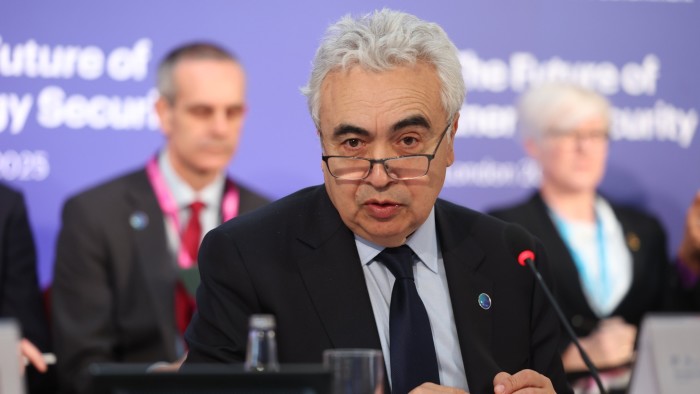Unlock the Editor’s Digest for free
Roula Khalaf, Editor of the FT, selects her favourite stories in this weekly newsletter.
The world’s top producers of critical minerals have tightened their stranglehold on the market despite western countries’ efforts to cut their dependency on China for metals key to the energy transition.
The countries that are the top producers of metals such as copper, lithium, nickel and cobalt have increased their control in recent years, the International Energy Agency said in a report on Wednesday.
The report highlights how far western countries still need to go to develop and diversify the supply of critical minerals, needed for electric vehicle batteries and in the defence and the technology sectors.
Western governments have argued that diversifying production is necessary for energy security.
Average market share of the top three producers of copper, lithium, nickel, cobalt, graphite and rare earth elements was 86 per cent in 2024, up from about 82 per cent in 2020, the agency said.
The Paris-based agency noted that almost all supply growth in different segments of the metals markets came from the single top producer, such as Indonesia for nickel and China for cobalt, graphite and rare earths
“We have all the reasons to be worried about the concentration of critical minerals, especially on the refining side,” said Fatih Birol, the IEA’s executive director, as he called for governments to “urgently” provide support for new entrants.
“We cannot rely only on market forces if we want diversification and to move away from this concentration,” he told the Financial Times.
China dominates most supply chains, exerting a hold over all stages from mining to metal processing, as well as the production of the batteries and magnets used in electric vehicles and other key industrial components.
The country is the leading refiner and processor for 19 of the 20 minerals analysed by the IEA, with an average market share of around 70 per cent.
Its dominance is likely to increase even as US President Donald Trump has taken an aggressive approach to building a domestic industry, including by imposing import tariffs and seeking deals with potential suppliers such as the Democratic Republic of Congo, Greenland and Ukraine.
But the IEA, an arm of the OECD, warned that the average share of the top three supplier countries would fall “only marginally over the next decade”, meaning concentration levels would in effect return to 2020 levels.
Concentrated supply and export restrictions by countries including China risked “painful disruptions”, the IEA said, adding that 55 per cent of the minerals covered in its report were subject to some export controls.
The copper market, which is essential for sectors including construction and technology, would be especially vulnerable over the next decade as growth in demand outstrips supply, said the IEA, which expects a 30 per cent supply gap by 2035.
The US-China trade dispute was also deterring spending, said the IEA, which found that investment in critical minerals had grown by just 5 per cent last year, from 14 per cent in 2023
https://www.ft.com/content/f3ab6ff3-c667-496e-a7d6-334bac20d25e


